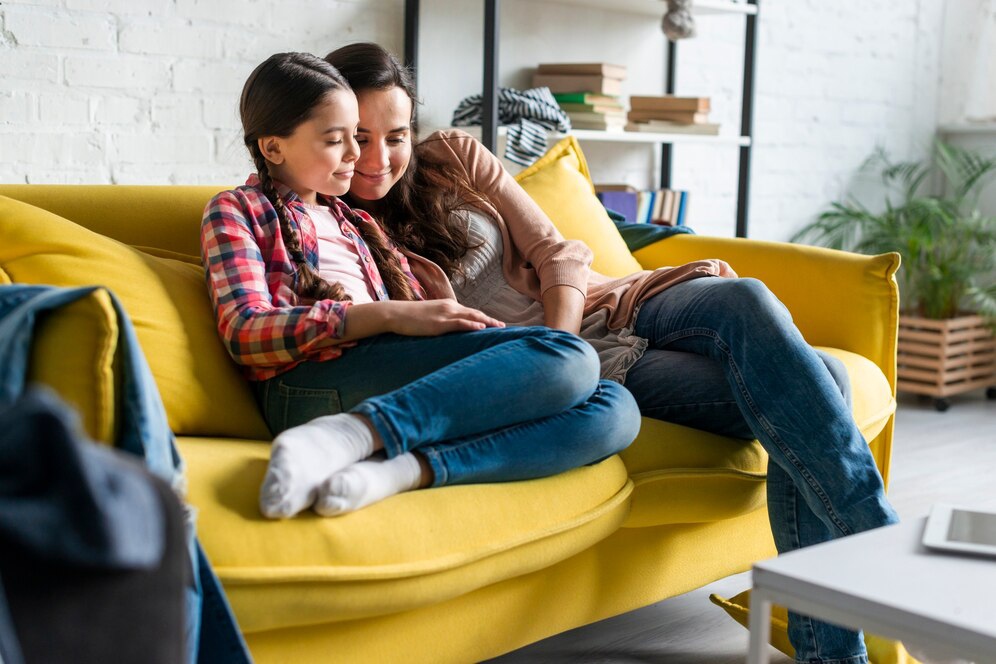The Parenting Blog

How to Create an Open Dialogue About Puberty at Home
Why Talking About Puberty Should Start at Home
If the thought of having “the puberty talk” makes you cringe or panic, you’re not alone. Many parents feel unsure of how or when to start these conversations. Yet, establishing open communication about puberty at home is one of the most important things you can do to support your child’s emotional well-being and physical health.
Puberty is more than just body changes. It’s a gateway to self-awareness, emotional complexity, and evolving social relationships. When parents take the lead with honest, empathetic communication, children are far more likely to approach adolescence with confidence and curiosity, not confusion or shame.
This guide explores how to foster parenting conversations that make room for questions, reflection, and trust, using expert advice, evidence-based practices, and a compassionate tone.
Understanding the Core: Why Open Communication During Puberty Matters

The Link Between Talk and Trust
According to the NSPCC and recent child psychology research, young people who feel safe talking to their parents about sensitive topics are less likely to engage in risky behaviour, more likely to practise self-care, and more resilient during social challenges.
But here’s the catch: if you wait until your child is visibly changing, it might feel too late or uncomfortable. Open communication about puberty should begin before the changes start, and continue long after.
What Stops Parents From Talking?
Common barriers include:
- Embarrassment
- Not knowing enough
- Fear of saying the wrong thing
- Waiting for the “right time”
Important: It’s okay to feel awkward. What matters is showing up with honesty, compassion, and a willingness to listen.
Pro Tip: You don’t need to cover everything in one go. Think of it as an ongoing conversation, not a one-off event.
Quick Guide / Checklist: Open Communication Puberty Essentials
- Use correct anatomical terms early and often
- Begin conversations before visible changes start
- Create a safe, non-judgmental space for questions
- Let your child lead some parts of the conversation
- Avoid jokes or teasing about puberty-related topics
- Share accurate, age-appropriate information
- Follow up regularly with check-ins and empathy
- Reinforce that they can talk to you anytime
Secret Tip: Normalise talking about bodies and emotions from an early age—it makes future puberty conversations feel natural, not forced.
Step-by-Step Guide: How to Practise Talking About Puberty
1. Set the Stage
Choose a time and place that feels relaxed and low-pressure. A car ride, a walk, or preparing dinner together are great opportunities.
Start with something like:
“You know, your body will go through some changes in the next few years. Let’s talk about what to expect so you feel ready.”
2. Use Clear and Positive Language
Avoid euphemisms or vagueness. Say:
- Penis, vagina, periods,testicles, erections, hormones
And avoid:
- “Down there,” “the time of the month,” or “man parts”
This helps your child feel confident using accurate terms and reduces shame.
3. Ask Open-Ended Questions
Instead of lecturing, ask:
- “What have you heard about puberty so far?”
- “Is there anything you’re wondering or worried about?”
- “Have your friends talked about this before?”
This encourages honesty without pressure.
4. Share Your Own Experiences
Personal stories can make conversations more relatable. Try:
“I remember not knowing what to do when I got my first spot…”
Be careful not to centre the conversation entirely on your past—keep the focus on them.
5. Prepare for Their Reaction
Some kids will shrug and walk away. Others might ask fifty questions in one go. Either response is okay.
“You can come back to me anytime if you think of something later.”
Important: The goal isn’t to have the perfect script—it’s to build a bridge of trust.
6. Use Visual Aids or Resources
Books, videos, and diagrams can support verbal explanations. Try:
- NHS puberty animations
- Age-appropriate books (e.g. The Body Book for Boys, Celebrate Your Body)
7. Reinforce Ongoing Support
End conversations with clear invitations:
“I’m always here to talk. There’s no silly question.”
Follow up a few weeks later, especially if visible changes begin.
Best Practices & Additional Insights

Talk to All Children—Not Just Girls or Boys
Puberty isn’t gender-exclusive. Teach all children about:
- Menstruation
- Erections
- Voice changes
- Mood shifts
This builds empathy and helps reduce teasing or misinformation.
Repeat and Revisit
Don’t aim to cover everything at once. Repetition is key, especially as your child matures.
Pro Tip: Use puberty as a springboard to other important topics like self-esteem, peer pressure, or consent.
Use Media as a Conversation Starter
TV shows, songs, or online content can open the door. Ask:
- “What do you think about that scene?”
- “How would you feel in that situation?”
FAQs
What if my child doesn’t want to talk?
Respect their space, but keep the door open. You might say:
“I get that you might not feel like talking now. I’ll be here when you’re ready.”
Leave a book or resource nearby and follow up gently.
How early should I start talking about puberty?
Start laying the groundwork between ages 7 and 9. Use simple, clear language that builds over time.
What if I don’t know the answers?
It’s okay to admit you don’t know. Say:
“Great question—let’s look it up together.”
This models curiosity and resourcefulness.
Should both parents be involved?
Ideally, yes. Children benefit from multiple trusted adults being available for guidance.
Conclusion: Start the Conversation Today

Talking about puberty at home doesn’t have to be uncomfortable or complicated. With empathy, consistency, and honesty, you can create a family culture where nothing is off-limits and no question is too embarrassing.
Start small. Be available. Use real words. And most importantly, listen more than you speak.
Join the conversation: What helped you start puberty conversations with your child? Share your favourite tips or resources in the comments below.









